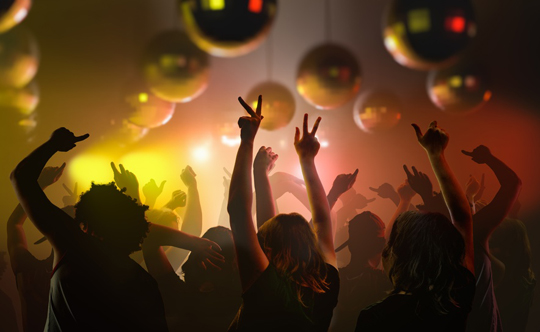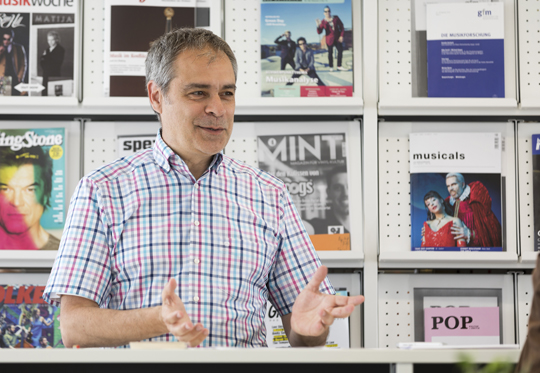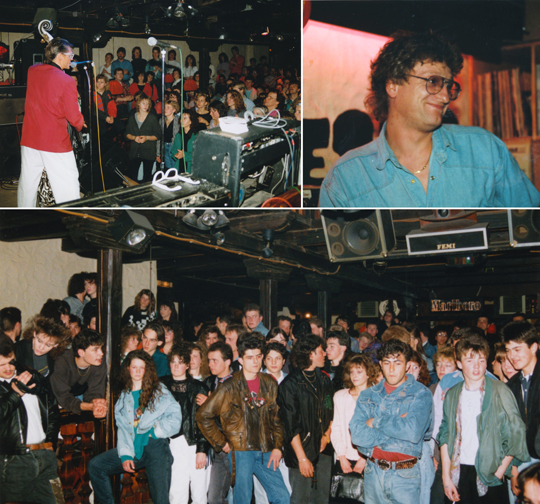Partying, flirting, feeling free
Freiburg, Jan 16, 2018
Rural discotheques are enjoying a comeback – virtually at least. Their often rustic atmosphere and the music of the 1970s, 1980s and 1990s are being revived in social media. Dr. Dr. Michael Fischer, head of the Center for Popular Culture and Music, is researching into discotheques in the Black Forest. Judith Burggrabe chatted with him about their influence on youth culture.

Photo: vchalup/Fotolia
Mr Fischer, what gave you the idea for this project?
It started with an inquiry from the Vogtsbauernhof Black Forest open-air museum. They asked if I would consider giving a lecture on the music culture of the 1980s. I spontaneously agreed, but I didn’t know at that time that there was no material on the subject. I couldn’t just pick up a book and read up on the material. This called for original research work with archive visits and interviews with contemporary witnesses.
The film Saturday Night Fever appeared in cinemas 40 years ago and gave rise to the breakthrough of disco. How did this happen?
The disco style was already in the air before the film. The first bars began entertaining their guests with records at the end of the 1950s. The advantage to the guests was that they always heard the original; for Rock’n’Roll that was already an important reason for buying a record. And for pub landlords it was simply cheaper to have records and a DJ to play and introduce them. Then at the end of 1977 the disco craze finally set in with the appearance of the American film Saturday Night Fever, which in Germany was known by the rather staid title ‘Nur Samstag Nacht’.
How rapidly did the disco phenomenon spread through West Germany?
Soon there were many small discotheques. Around 1980 there were already between 8,000 and 9,000 in operation. In rural areas in particular there were few alternatives to this youth-oriented form of spare time entertainment. Discos tended to attract teenagers in areas that generally lacked infrastructure and had until then been socially very traditional.

Many teachers believed that if you went to a disco you were practically dead already. Michael Fischer is especially interested in these cultural assessments of the phenomenon. Photo: Jürgen Gocke
Why were dance clubs so attractive to teenagers?
The essential point is that the disco promised freedom. It was the place to get to know people, to flirt and to launch friendships or sexual encounters. The Badische Zeitung summed it up in 1996: “Just at the disco to dance? As if! The main thing is flirting.” It was also loud there and adults stayed away. So this became a space just for teenagers, one that promised a certain amount of autonomy and self-determination.
Did this lead to cultural conflicts?
Well, in a dance bar in Freudenstadt for instance there were disputes between the residents and the teenagers because of noise nuisance. This generational conflict was extremely clear from the letters of complaint sent to the local council. They objected to doors banging, talking loudly, excessive smoking and much more. Older people weren’t just bothered by the noise, but the entire youth culture; they didn’t understand what the young people were after in the disco. Amongst other things, the letters of complaint said that the young people should do the weeding in the Kurgarten park instead. Naturally the teenagers rebelled against this!
Were there also social tensions?
Since some of the hip discotheques had very large catchment areas, the teenagers had to be mobile in order to go out at night. However alcohol consumption led to numerous accidents. One community came up with the idea of using a Black Forest bus that covered several villages to collect the teenagers and take them safely to the disco. Although the parents liked the idea, the teenagers thought the bus was extremely square and barely used it, so the service was cut for lack of demand. This anecdote shows that the whole thing was laden with symbolism: the bus failed at a symbolic level, so to speak, because it contradicted the teenagers’ sense of freedom.

Backcombed hair, lots of denim, even more leather and a groovy afro: a concert from the 1990s. Photos: Kai-Uwe Bitsch
Discotheques were also suspected back then of being places where drugs were dealt.
That’s only partly true. The political discourse was a bit hysterical back then. In general, the opinion prevailed – especially amongst teachers – that if you went to a disco you were practically dead already. For me as an academic this cultural assessment of the phenomenon is interesting. It was often also said that the youth were being ruined by drugs, alcohol and unsuitable music. These clashes led to curious actions. For instance, the police organized dances and tried to provide information about drugs there. One pub in Waldkirch said it was willing to issue announcements about the dangers of drugs and hand out flyers. And music with drug-influenced lyrics had to be avoided. Essentially the whole thing was massively overblown, because the records show there were no serious issues.
How did the discos of that time differ from the clubs of today?
Disco fever faded in the 1990s. Clubs today are far more differentiated and address their audiences more specifically. Often there are several rooms where you can dance to different music; rusticity is rarely on offer now. The popular rural culture of those days now makes 40 to 60 year olds nostalgic – at revival parties or on social media.

